Last of the Cold War Spies (26 page)
Read Last of the Cold War Spies Online
Authors: Roland Perry

The KGB’s resident in San Francisco, Gregory Kheifetz, met the susceptible Oppenheimer himself at a 1938 party to raise money for the Spanish Civil War and worked on the relationship for the next seven years. In 1943, Kheifetz and Zarubin managed a major coup by influencing Manhattan Project leader Oppenheimer to allow Klaus Fuchs, a KGB agent and German refugee from Nazi Germany, to join the team of British scientists at the project research center in Los Alamos, New Mexico. He misrepresented himself to Oppenheimer as having “escaped from a German prison camp,” which gained the project leader’s respect and confidence. Fuchs proved to be one of the best Soviet intelligence plants of the mission to steal the bomb secrets.
34
During 1945, the KGB’s special task force on atomic espionage (Department S), led by Pavel Sudoplatov, presented Lavrenty Beria, the head of the Soviet Security Service, with updated summaries on the U.S. progress in atomic testing, the results of the bombs dropped, and research into new nuclear weapons. The data came from agents at Los Alamos and the main plants servicing it, especially Oak Ridge, Tennessee. Information also came from companies doing the actual manufacturing work, such as Kellex Corp. (a subsidiary of M. W. Kellog), E. I. Du Pont de Nemours, and Union Carbide.
35
With successful detonation and then use of the bomb in Japan, Sudoplatov ordered all his agents to push the idea that technology should be shared worldwide and that atomic energy should only be harnessed for peaceful means. Pressure was put on developing a peace campaign for nuclear disarmament.
“Disarmament and the inability to impose nuclear blackmail would deprive the U.S. of its advantage,” Sudoplatov said. “We began a worldwide campaign against U.S. nuclear superiority.”
36
Straight would be useful. However, he would have a much wider role as one of the key agents seconded to garner as much intelligence as possible for the Russians about nuclear weapons and the huge industry that was developing around them.
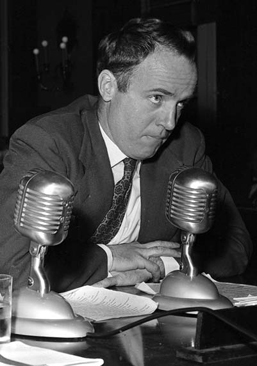
House Tensions:
Michael Straight, showing the strain under intense questioning by the Select Committee of the House of Representatives investigating tax-exempt foundations that supported communist-front organizations.
Wide World Photo
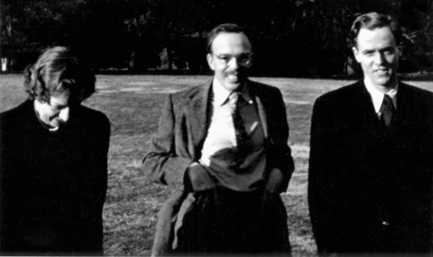
Family Trust Showdown:
Dorothy Elmhirst, husband Leonard (center) and Michael Straight at Dartington in early 1950 before the legal battle with Whitney Straight over misuse of family Trust funds.
Courtesy of William Elmhirst.
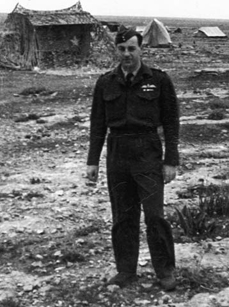
Air-ace with the Aces:
Whitney Straight, businessman, highly decorated war-time fighter pilot and part-time British spy, in uniform during World War II. Whitney had the upper hand in the battle over the family Trust. He wanted “out” in early 1950 when he learned his brother Michael was a KGB spy.
Courtesy of William Elmhirst.
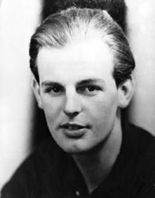
The First Man:
British agent Donald Maclean. Evidence from KGB-defector Walter Krivitsky eventually led to Maclean being the first of the core Cambridge University spy ring to defect to Russia in 1951. Burgess went with him.
Hulton Archive/Getty
Images
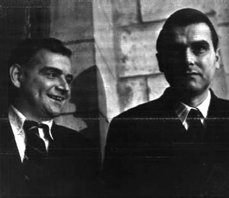
Second Man in Exile:
British KGB spy Guy Burgess in Russia in 1957, six years after his defection, with
London Daily
Express
photographer, Terry Lancaster. Burgess master-minded Straight’s recruitment to Soviet Intelligence in early 1937.
Hulton Archive/Getty Images
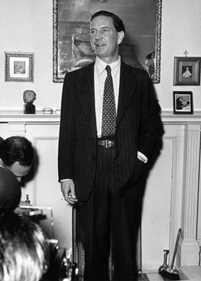
Third Man in Denial:
Kim Philby at his London flat in 1955 denying he was the so-called Third Man. He defected to Russia in 1963.
Hulton
Archive/Getty Images
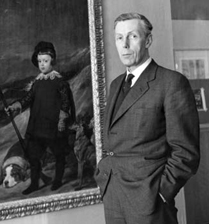
The Fourth Man:
Anthony Blunt, the keeper of espionage secrets and the Queen’s pictures. Blunt carried out Burgess’s plan to recruit Straight to the Cambridge spy ring in early 1937.
Hulton Archive/Getty Images
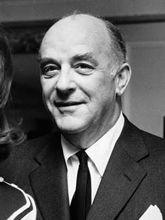
The Fifth Man:
Victor Rothschild, who used his close friend Blunt as the middle-man to pass on intelligence, especially on weapons development, to the KGB. (John Cairncross, who never met any other members of the ring, but was another major spy, is also nominated by some observers as The Fifth Man.)
Corbis
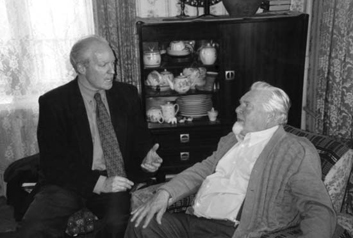
Modin, KGB’s Cambridge Control:
The author (left) with KGB masterspy, Yuri Ivanovitch Modin in Moscow. He took up his decade-long role as Control of the key Cambridge Ring in London in 1947, making a mockery of claims by ring members, including Straight, that they did not spy in the Cold War (1946–1990).
Author photo.
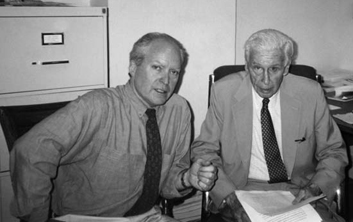
Meyer, CIA Masterspy:
The author (left) with CIA man Cord Meyer, in Washington, D.C. Meyer claimed Straight spied for the KGB in the Cold War years.
Author photo.